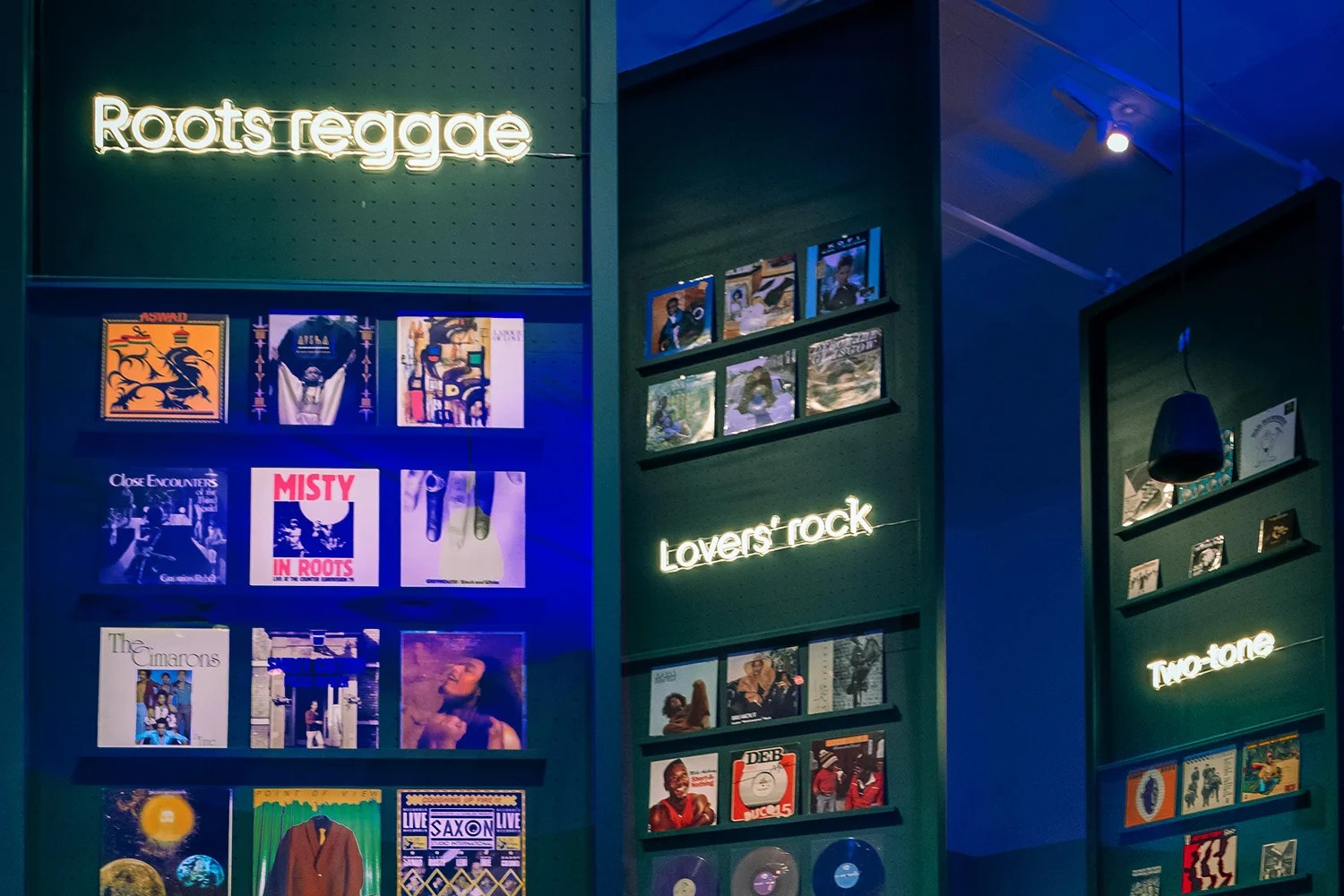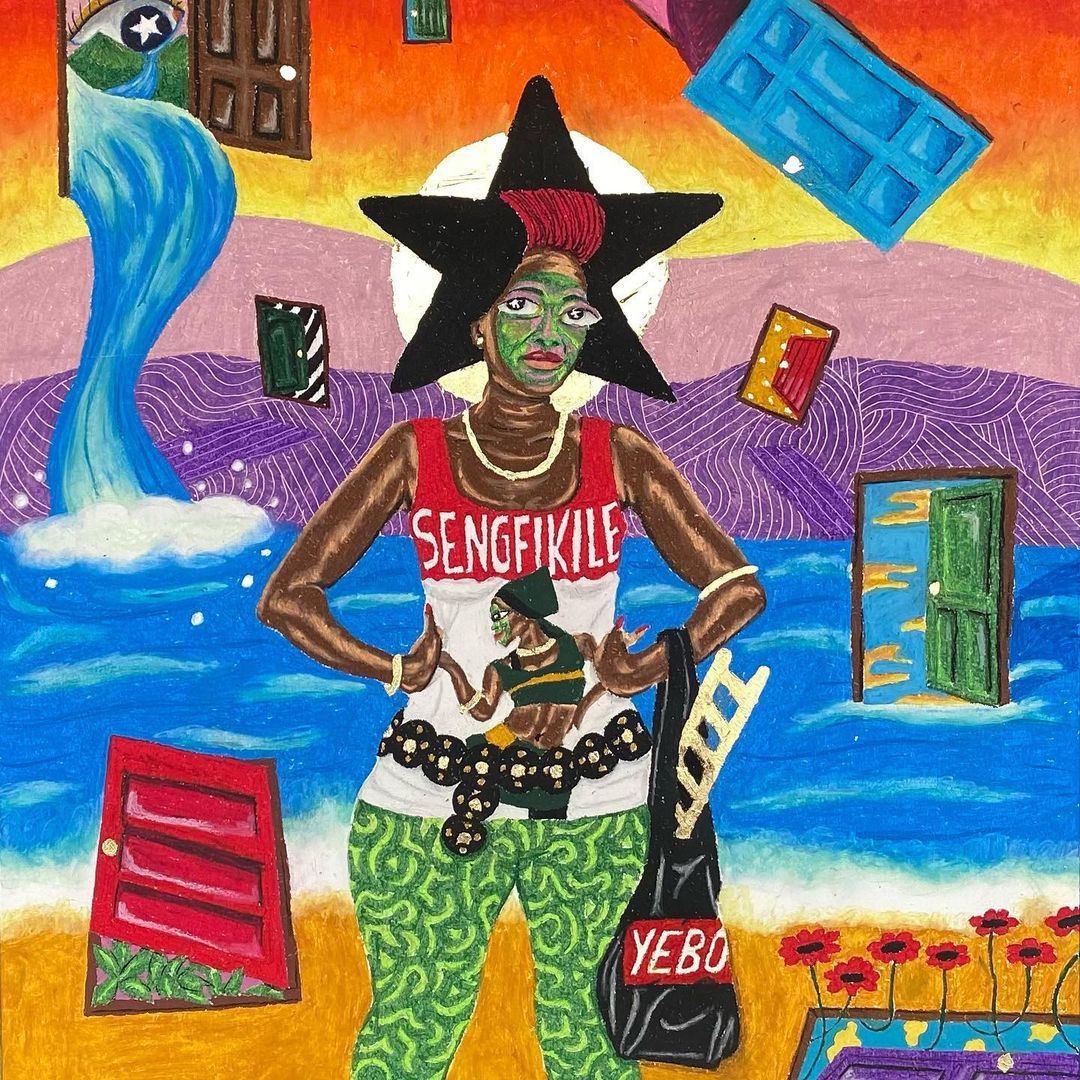Inside Beyond the Bassline: 500 Years of Black British Music, at the British Library, featuring ‘Of Us’ by Jukebox Collective
“Beyond the Bassline” at the British Library is the first major exhibition documenting five centuries of the musical journey of African and Caribbean people in Britain. Curated by Dr. Aleema Gray and Mykaell Riley, the exhibition explores the people, spaces, and genres that have transformed the landscape of Black British music.
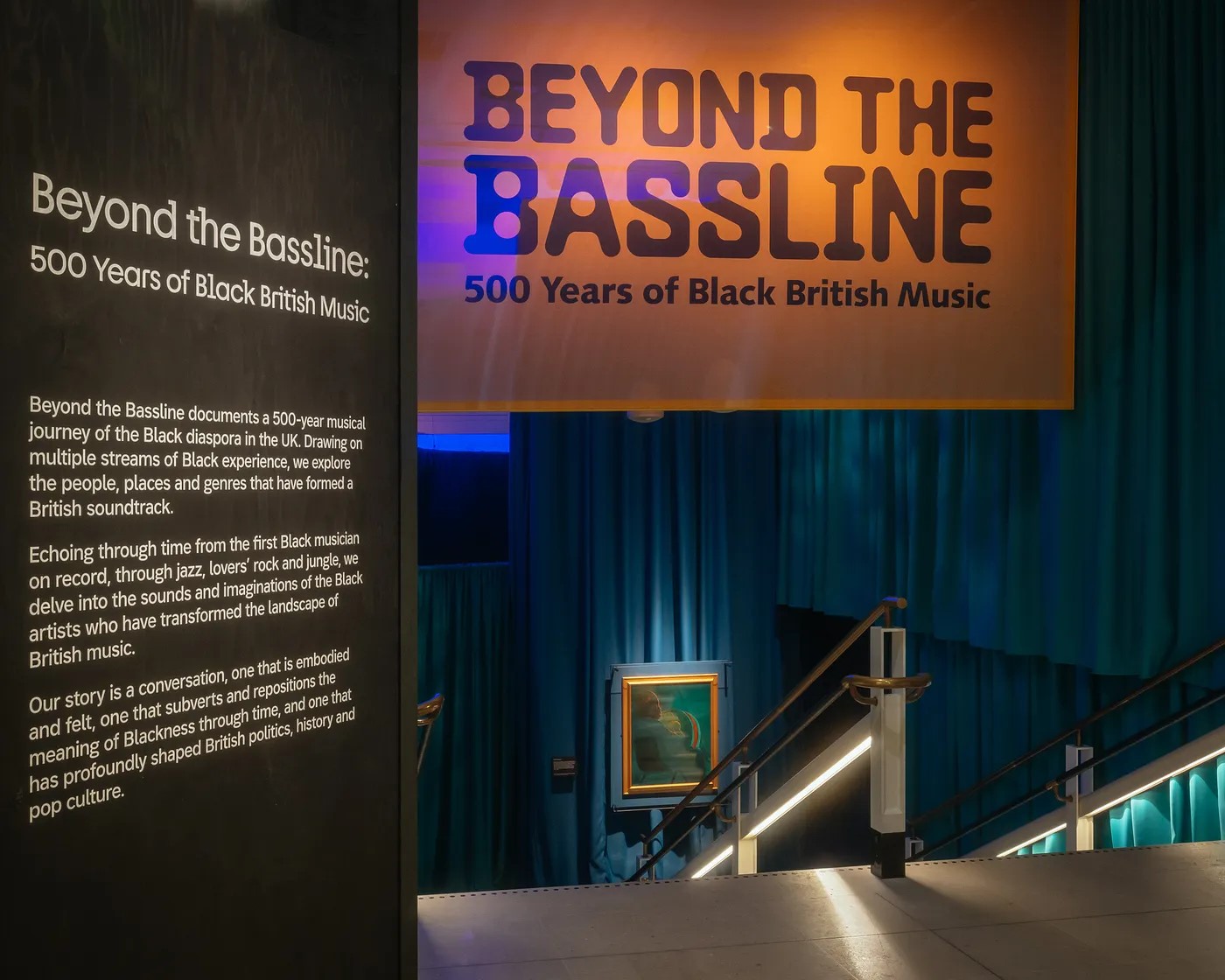
Through a rich display of sound archives, artefacts, performances, and multimedia presentations, the exhibition delves into the impact of Black British musicians, creatives, and entrepreneurs on popular music since the 16th century. Divided into five chronological spaces, each offering a visually and acoustically distinct exploration of this multifaceted musical journey. These spaces are Ocean, On Stage, The Frontlines, In the Record Shop, and Cyberspace. Between each, visitors encounter Interruptions, transitional areas curated by community partnerships.
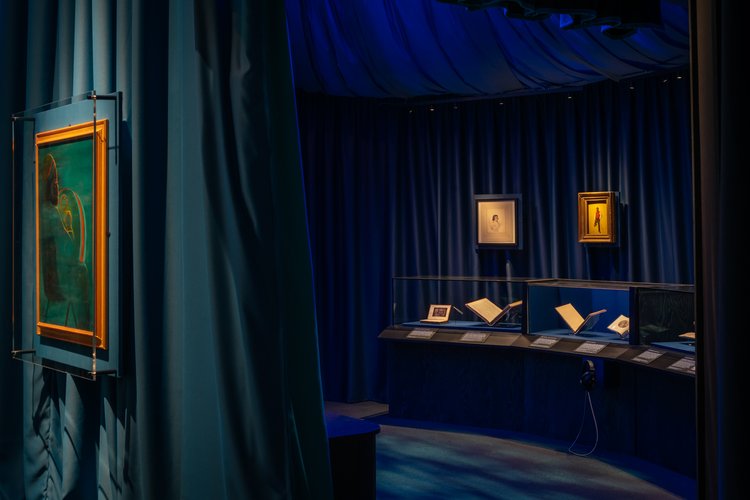
The journey begins in the Ocean space, which explores the traditions of the early forced arrivals in Britain between the 1500s and 1870s. The Atlantic Ocean is placed at the heart of this narrative, symbolising a shared vessel carrying memories and stories from Africa and the Americas. Featured here are some of the earliest known Black musicians, including George Bridgetower and John Blank.

Surrounded by deep blue curtains and marine sounds, visitors are guided into the first Interruptions space. This area presents a layered textile installation Of Us (2024), a Jukebox Collective production commissioned by the British Library. Directed and choreographed by Liara Barussi, and filmed in South Wales, the film pays homage to one of the UK’s oldest Black communities, based in Tiger Bay, Cardiff. Through dance and movement, Of Us reflects on themes of migration, identity, and the enduring ancestral connection between body and memory.
“Of Us journeys into the whispers of our seas, intertwining stories of migration with the universal symbolism of water. Echoing concepts of the Black Aquatic and Tidalectics, the film juxtaposes the fluid with the fixed,” says Liara Barussi, Artistic Director of Jukebox Collective.
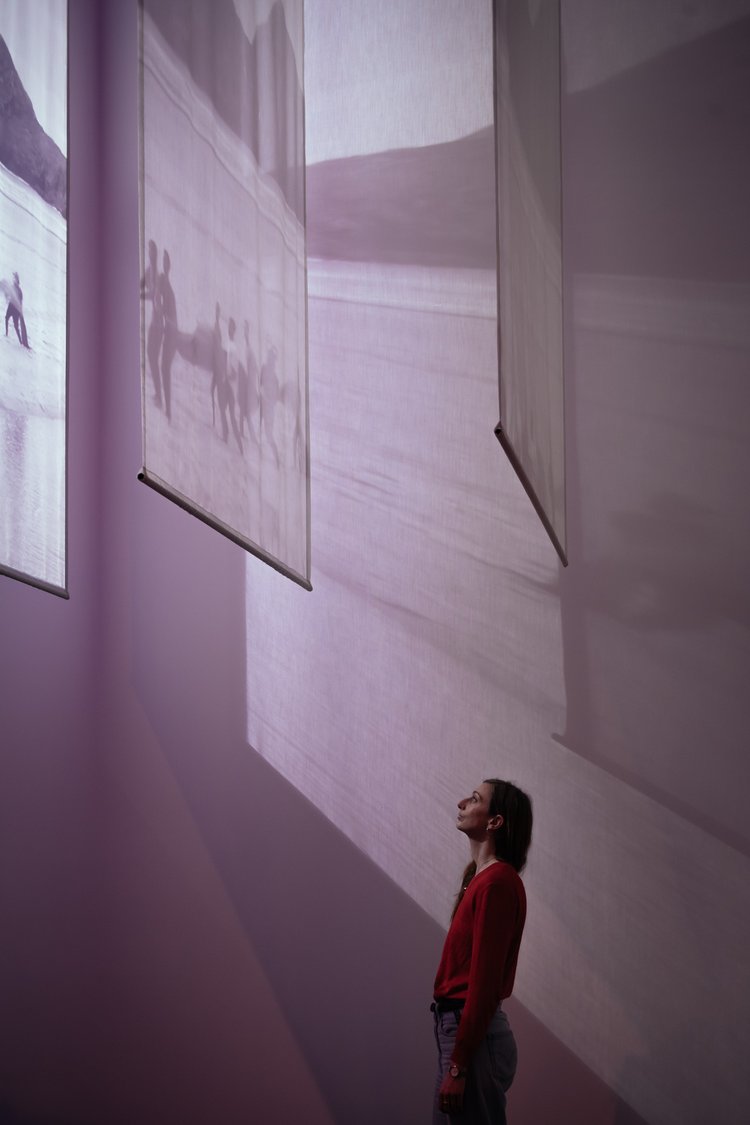
Next, the exhibition enters On Stage (1880s-1960s), a period marking the growth of Black creativity and its influence on popular music with the emergence of jazz and swing. Here, archival footage and sound collections from notable clubs around the country are showcased, along with musical instruments such as a double bass belonging to Gary Crosby, founding member of Jazz Warriors, and a 1950s steelpan on loan from the Horniman Museum.
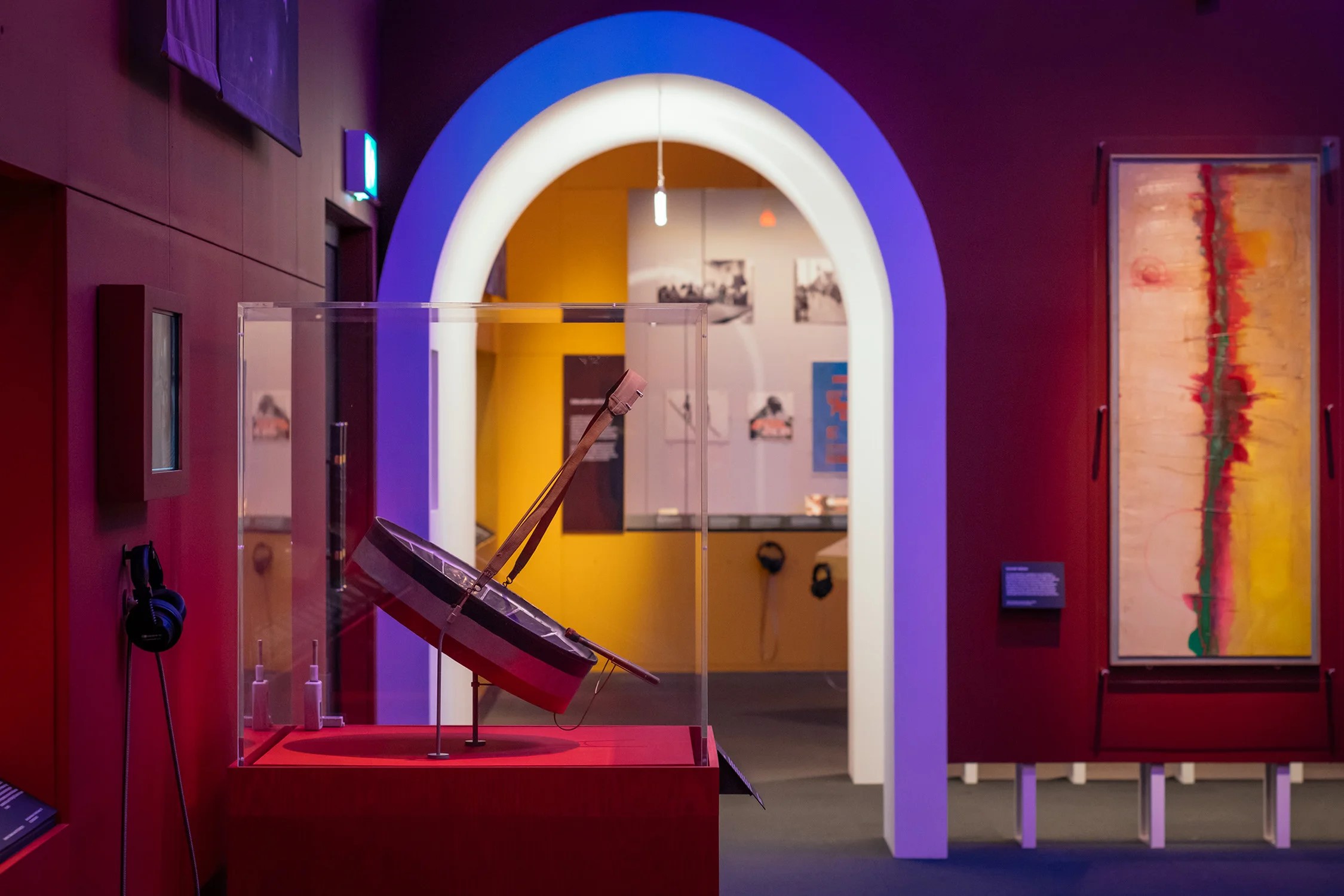
The following section, The Frontlines (1950s-1980s), shifts the focus from performance spaces to outdoor and domestic spheres, examining the relationship between music, community, and identity formation. This era explores the arrival of the Windrush generation, who brought sound systems and reggae culture with them, the rise of Carnival celebrations, and the emergence of Dancehall and Soca music. Highlighting key clubs that served as safe spaces for Black people in the face of oppressive racism, including The Reno in Manchester, the Bamboo Club in Bristol, The Reggae Klub in Scotland, and The Four Aces in London. However, the standout item here is the Peacock costume, designed by Hughbon Condor for the Leeds West Indian Carnival and worn by the crowned Carnival Queen in 2019.
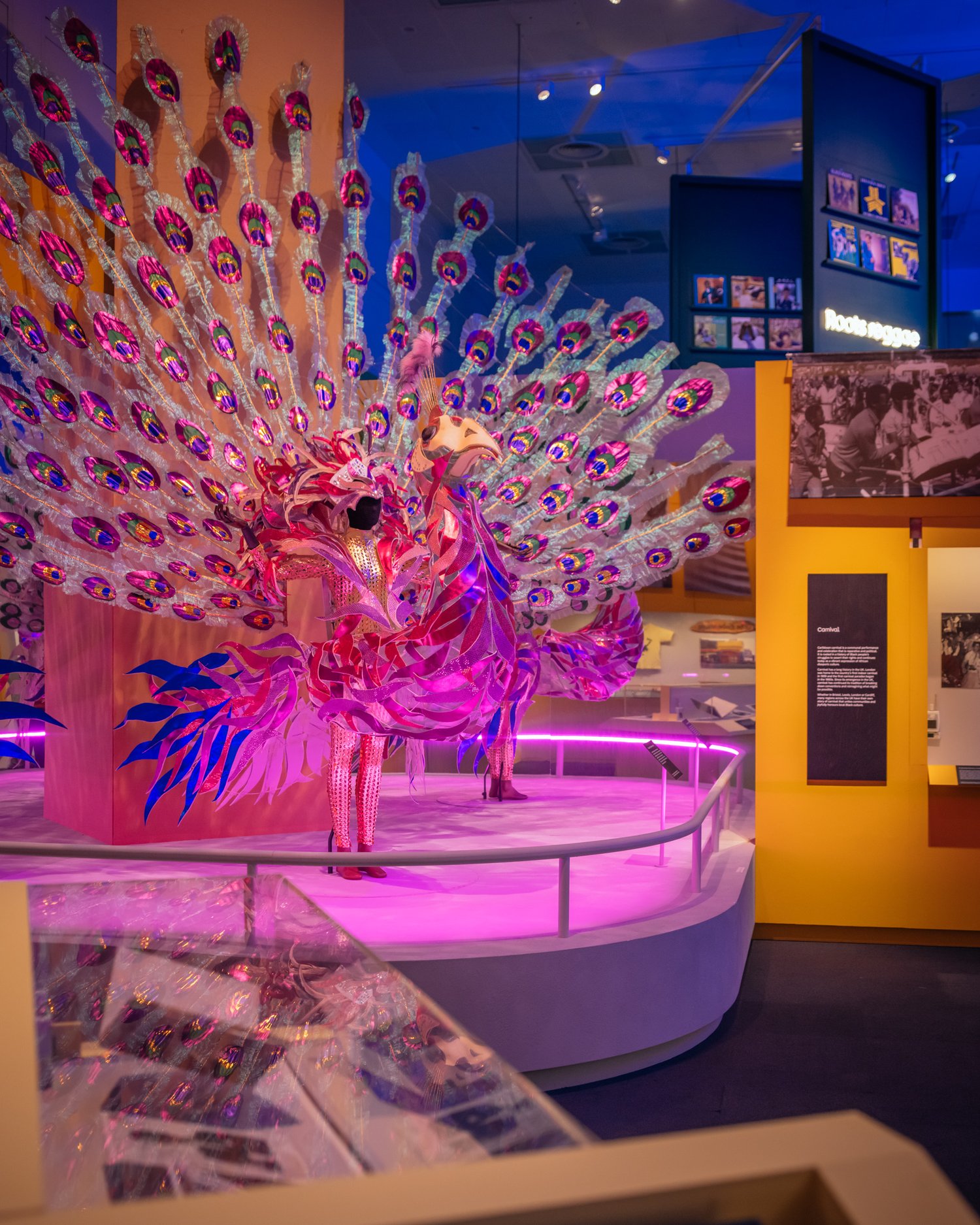
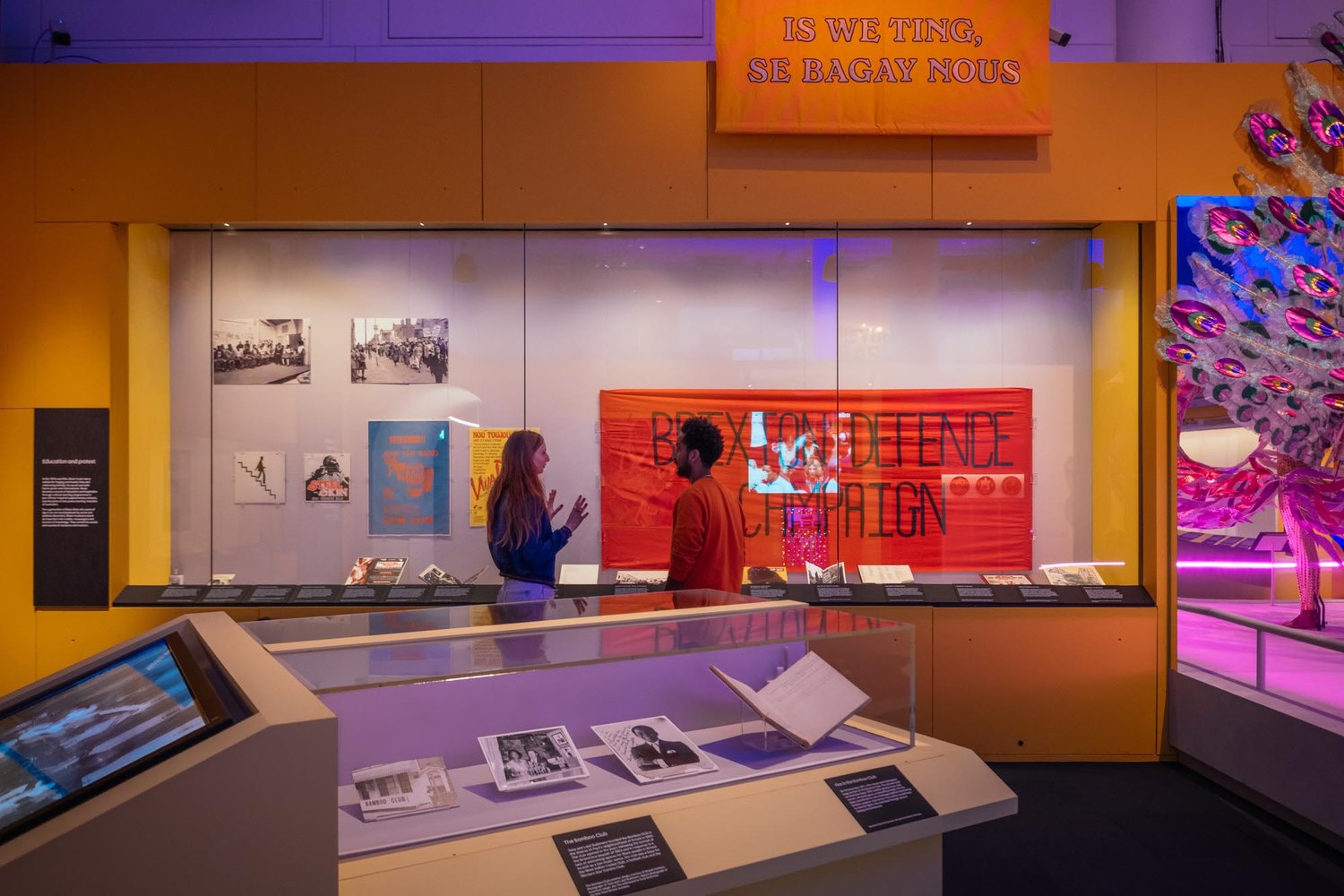
Arguably the most visually captivating part of the exhibition, The Record Shop (1960s-1980s) immerses visitors in towering structures displaying record covers from the era. With headphone stations scattered throughout the room, visitors can listen to oral histories, testimonies, newsreels, TV footage, and music. Among the artefacts is King Tubby’s Hometown Hi-Fi scoop bin, a rare relic from the birth of sound system culture.
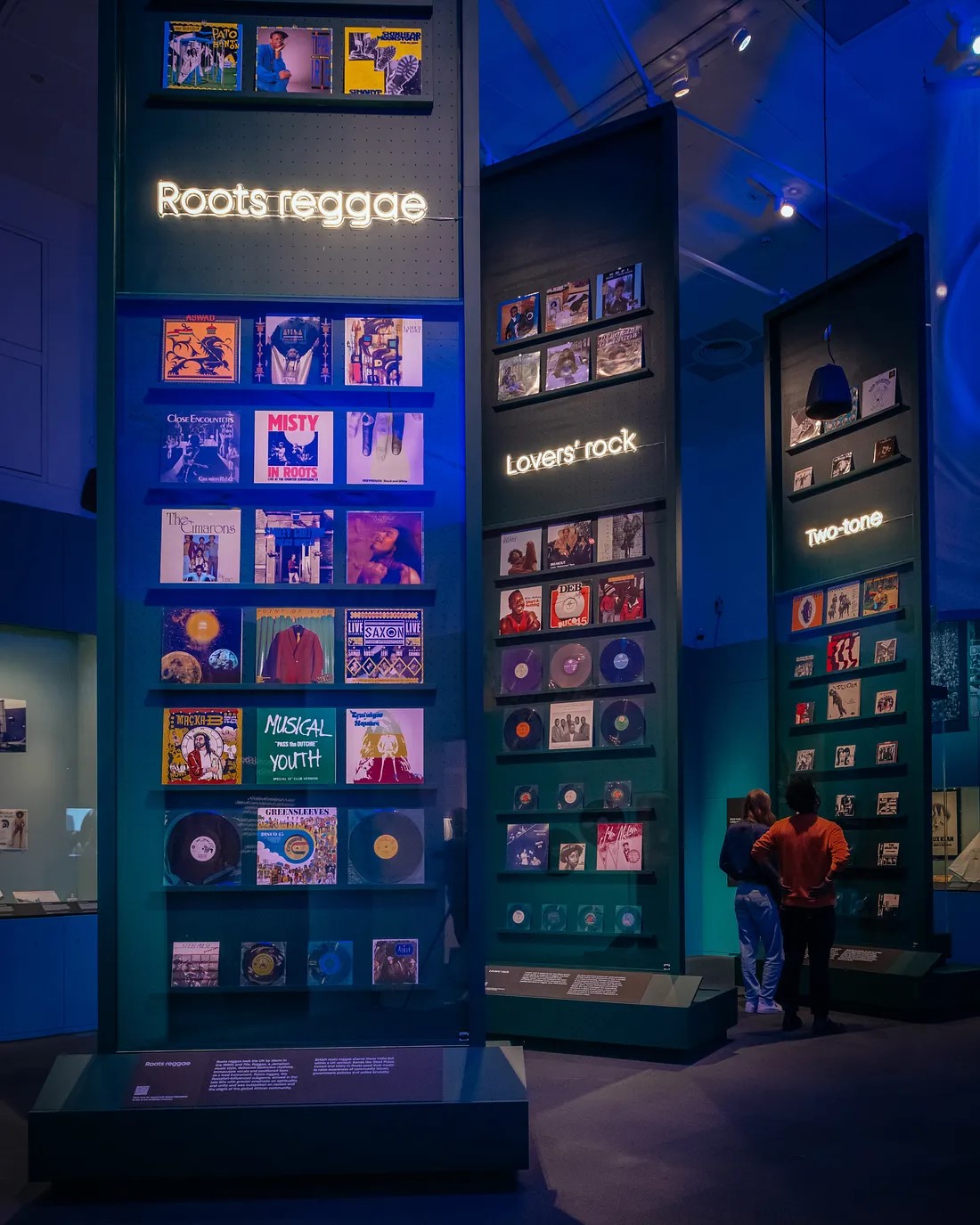
The journey ends in the present with Cyberspace (1990s-2020s), which examines the modern-day impact of technology and the mainstream popularity of Black British artists. This section explores urban genres like grime and jungle, the MOBO Awards, and the emergence of digital music distribution. Highlights include Stormzy’s signed setlist from his iconic 2019 Glastonbury performance, alongside the bottle of champagne he toasted with, marking the first time a Black British solo artist headlined the festival.
“The music celebrated in this exhibition is more than a collection of sounds. It’s a living history, echoing through the centuries. Our goal was to challenge the very notion of Black British music and its connection to British history,” says Mykaell Riley, guest curator and Director of The Black Music Research Unit at the University of Westminster.
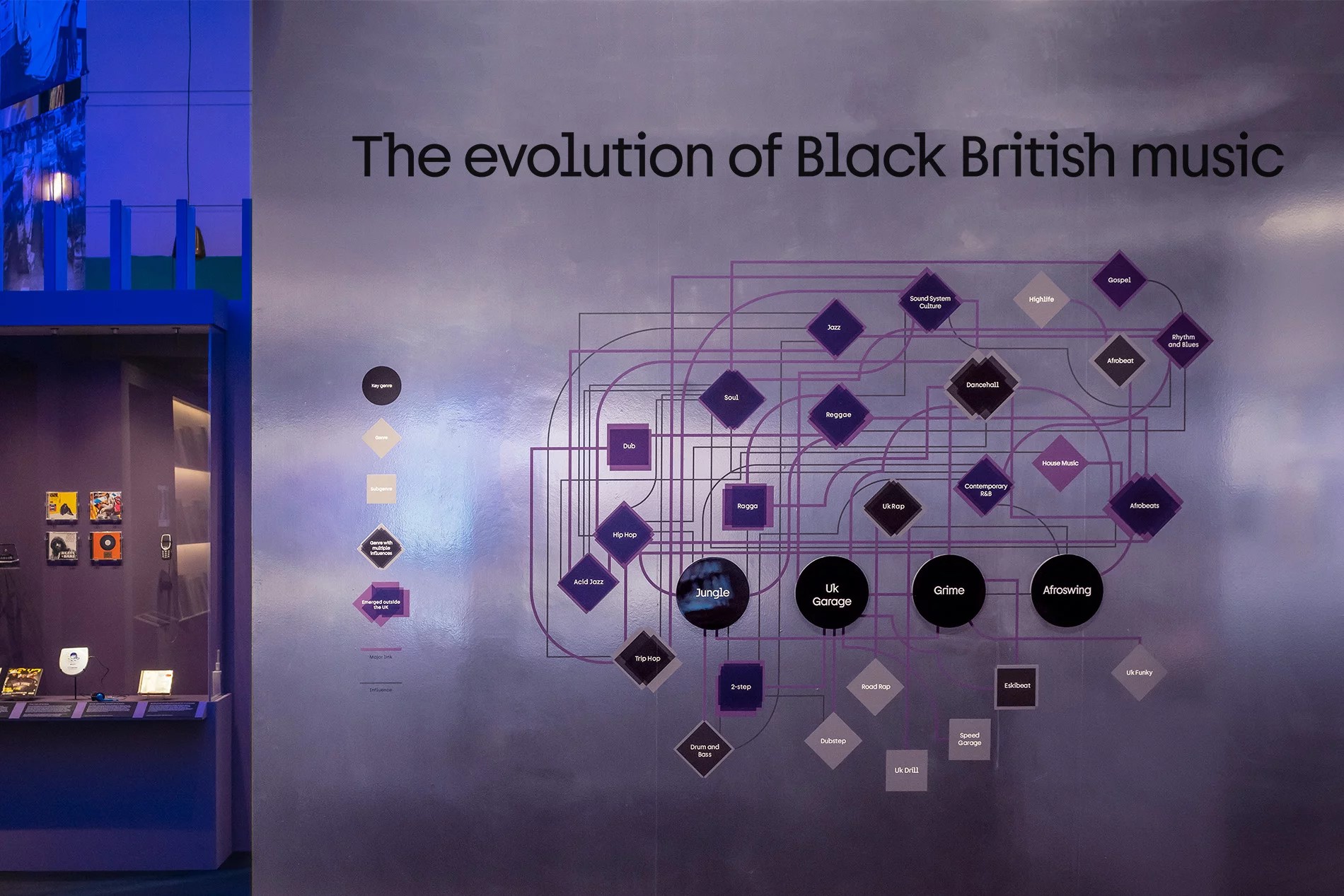
The exhibition concludes with Iwoyi: Within the Echo (2024), a five-channel, 10-minute film and sound installation that explores the radical potential of Black British music to manifest reparative futures. Directed by Tayo Rapoport and Rohan Ayinde in collaboration with Touching Bass, a South London-based musical movement and curatorial platform, the film is produced by NOIR and features an original score by Melo-Zed. It delves into heritage, diaspora, and the intimate experience of Black music culture.
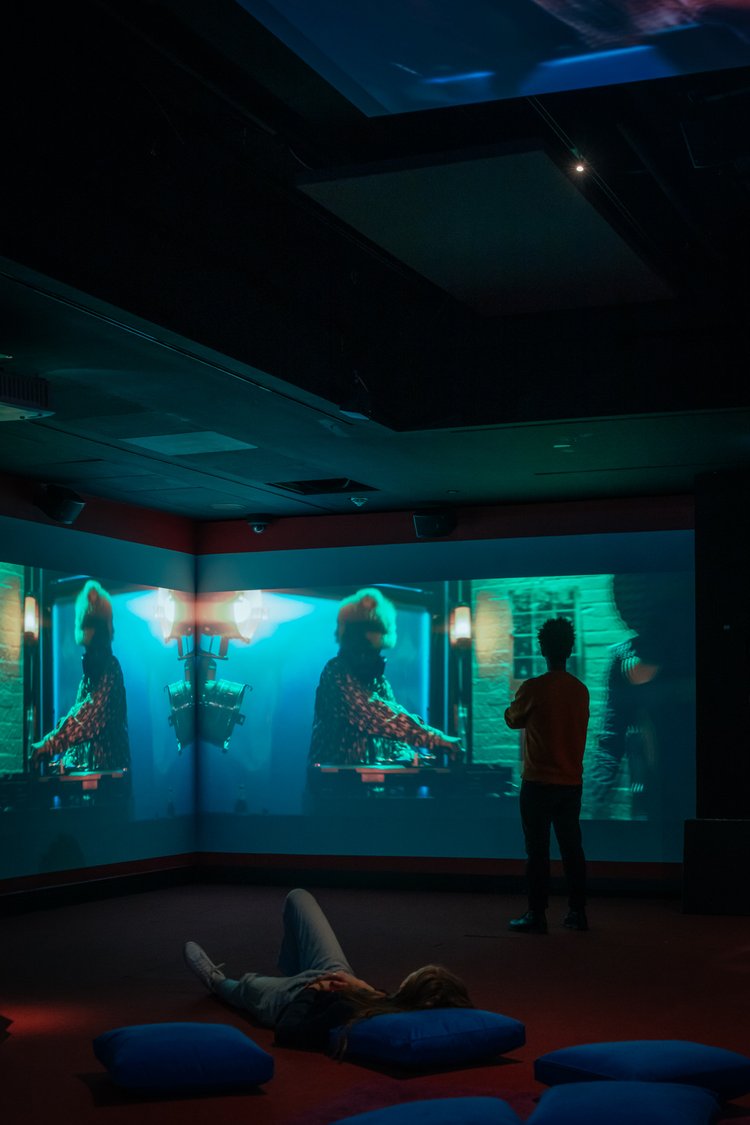
“The exhibition offers a timely opportunity to expand our understanding of Black British music and place it within a broader historical context. Black British music is more than a soundtrack; it has been a key part of an expansive cultural industry that has transformed British culture,” says lead curator Dr. Aleema Gray.
Beyond the Bassline offers a compelling look at the 500-year journey of Black British music and its lasting impact on British culture. Through artefacts, multimedia, and community stories, the exhibition celebrates the creativity and influence of Black artists while highlighting the deep connections between music, history, and identity.
Images Credit: Jim Stephenson
